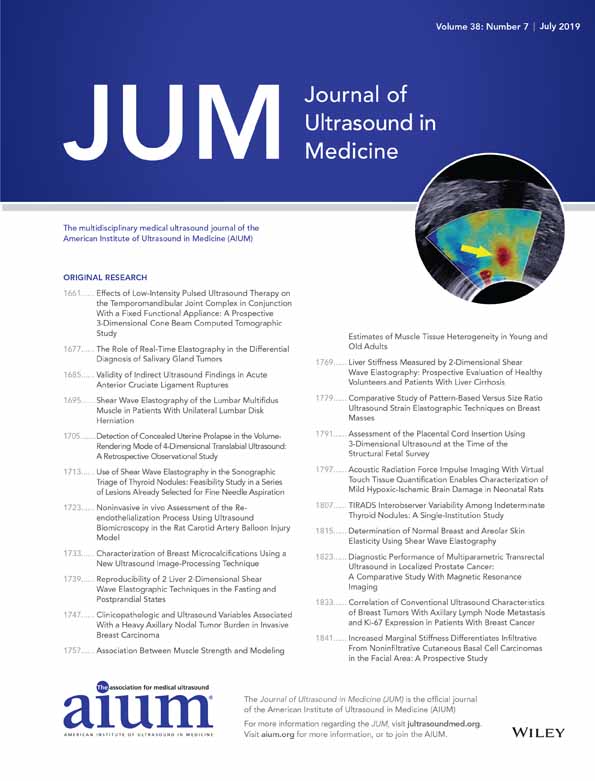Shear Wave Elastography of the Lumbar Multifidus Muscle in Patients With Unilateral Lumbar Disk Herniation
Abstract
Objectives
To assess lumbar multifidus muscle stiffness in patients with unilateral lumbar disk herniation (LDH) causing nerve root compression using shear wave elastography (SWE).
Methods
Thirty-three patients with unilateral subarticular LDH (L3–L4, L4–L5, and L5–S1) causing nerve root compression, diagnosed by magnetic resonance imaging, were enrolled in the study. Exclusion criteria were bilateral or multilevel LDH confirmed on magnetic resonance imaging, bilateral leg symptoms, and patients with a history of any spinal operation, malignancy, trauma, infection, spondylolisthesis, severe lateral recess stenosis, spinal canal stenosis, and substantial comorbidities. Two observers separately evaluated the multifidus muscle using SWE. Shear wave elastographic examinations of the muscle were performed slightly below the herniation using the spinous process of the vertebra as a landmark. The stiffness of the muscle between affected and normal sides was compared. Moreover, the correlation between the stiffness and duration of the symptoms and the correlation between the stiffness and severity of the nerve compression were also calculated.
Results
The mean stiffness values of the multifidus muscle on the affected side (mean ± SD: observer 1, 14.08 ± 3.57 kPa; observer 2, 13.70 ± 4.05 kPa) were significantly lower compared to the contralateral side (observer 1, 18.81 ± 3.95 kPa; observer 2, 18.28 ± 4.12 kPa; P < .001). The muscle stiffness had a moderate negative correlation with the duration of the symptoms and the severity of the nerve compression (observer 1, r = –0.535; observer 2, r = –0.458; P < .001).
Conclusions
The multifidus muscle on the ipsilateral side of the LDH showed reduced stiffness values, and stiffness values were negatively correlated with the disease duration and severity of the nerve compression. Further studies might reveal the potential role of SWE of the multifidus muscle in determining clinical outcomes and assessing effectiveness treatment in patients with LDH.




